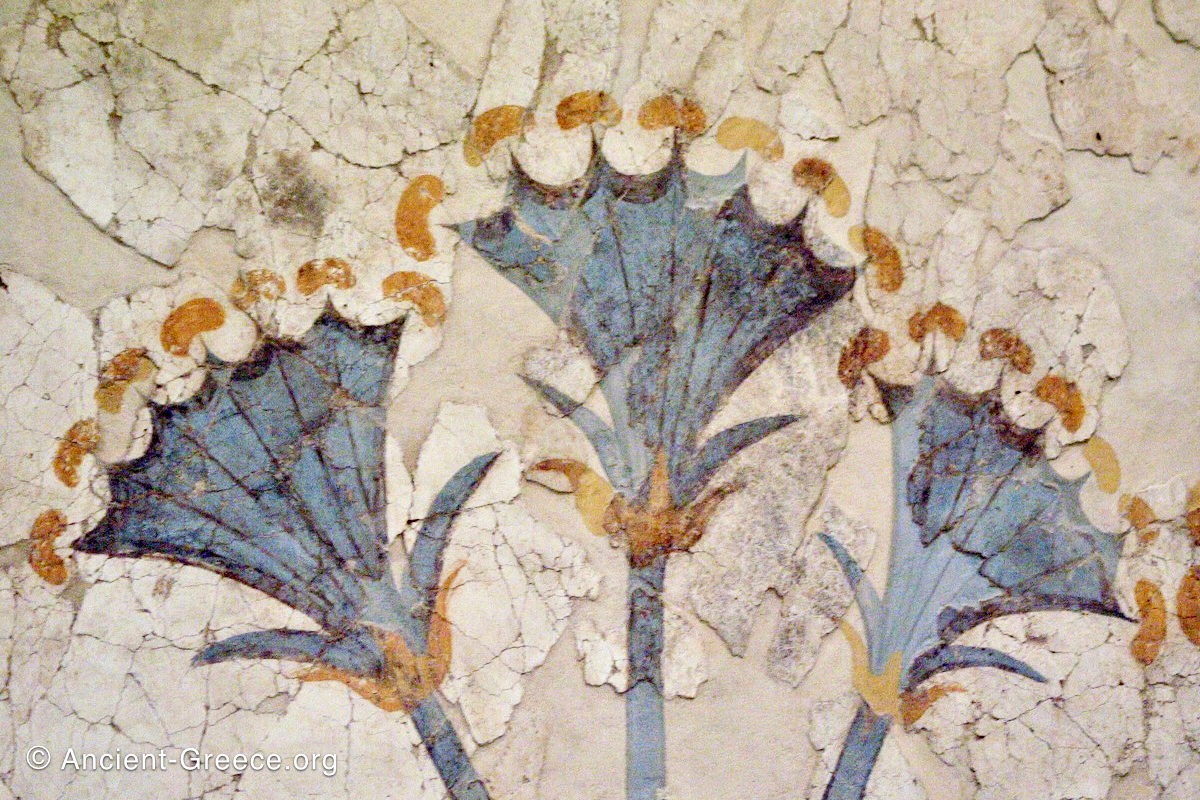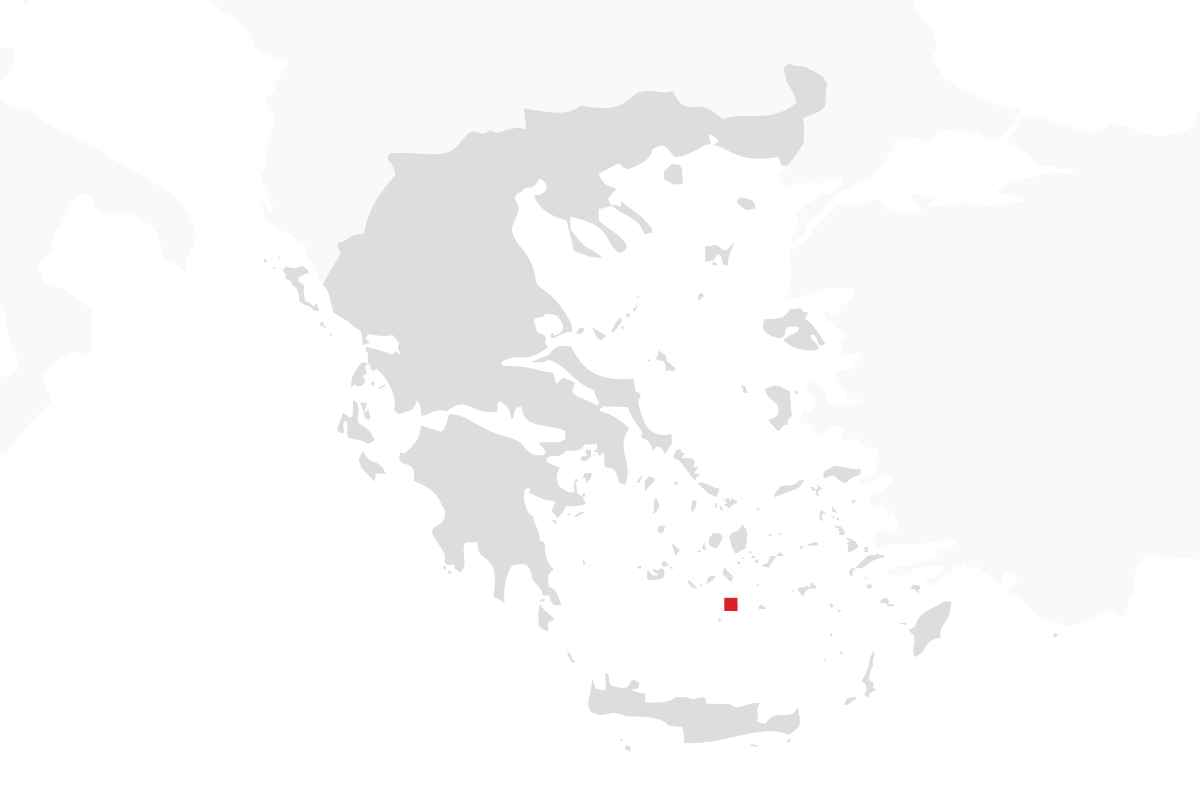
On this page:
The Prehistoric Museum of Thera in Santorini island, Greece, houses a large collection of artifacts from excavations at ancient Akrotiri.
Akrotiri is was a thriving Bronze-Age town when it was abandoned and destroyed by the Thera volcano eruption sometime between 1627 and 1600 BCE.
The volcanic material buried the town completely, keeping it frozen in time until the 20th century CE excavations, preserving thus a rare sample of a Bronze Age society in the Aegean.
The artifacts unearthed during excavations are indicative of a cosmopolitan urban center at its zenith when it was abandoned.
“The density of building, the paved streets, the sewage network linked directly with the sanitary facilities in the houses, the stabling of animals outside the city are all features typical of an organized urban center… the wall-paintings in public and private buildings, the rich and varied movable finds, the use of writing and of metrical systems are indicative of the complexity of Theran society in the 17th century BCE. The secondary/processing sector in the economy is enhanced through the manufacture of products that demanded craft specialization and division of labour. Alongside the arable farmers and stock-raisers, guilds of potters/vase-painters, masons, painters/artists, weavers, carpenters/shipwrights, basket-makers, merchants/mariners not only covered the needs of the local society but also supplied goods and provided services to other societies.” (Museum of Prehistoric Thera).
Akrotiri has been referred to in media as “Pompeii of the Aegean”, or “Greece’s Pompeii” because it had a fate similar to the earlier-excavated town of Pompeii in Italy. However, besides both towns being buried by volcanic ash in ancient times, there are no other similarities between the two. Akrotiri was buried in the 17th c. BCE during the Bronze Age, while Pompeii was buried about 1700 years later in 79 CE.
Highlights of the Museum of Prehistoric Thera include several large wall frescoes such as the “Wall Paintings of Monkeys” and the “Wall Paintings of the House of the Ladies”, many Cycladic statuettes, a plethora of pottery and every day artifacts that were buried in Akrotiri by the eruption of the Thera volcano.
Akrotiri Wall Frescoes
Click on each image for more information.
The House of the Ladies Frescoes:
“House of the Ladies” was a wealthy house of three floors in ancient Akrotiri. The second floor interior was decorated with the wall paintings depicted in these photographs. Several female figures interact in a lovely landscape that depicts several papyrus plants.
“Monkey Fresco“ from room B6. Information from the museum indicates “The wall-painting of the monkeys decorated the north and west walls of room Beta 6. From broad wavy bands of unequal width, extending across the lower part of the paintings and perhaps denoting water, rise rocks which fill the main field up to its decorative crowning zone and recall the Theran landscape in shape and colours. Blue monkeys, a species foreign to the Aegean fauna, clamber on the rocks, moving freely in all directions. All are depicted in profile except one, which is shown in frontal view, a bold rendering in Aegean wall-paintings.
The wall-painting of the monkeys, a masterpiece by an avant-garde painter, combines a certain restraint in colour and drawing (natural landscape) with freedom of composition, intense movement, varied poses and a registering of the momentary, thus creating an atmosphere that realistically conveys the character of the simians. The felicitous result perhaps indicates that the painter had a direct image of these animals, which will have been imported to the Aegean from the Eastern Mediterranean.” (Museum of Prehistoric Thera).
How they made the fresco:
Information from the museum of Prehistoric Thera indicates that the wall paintings of Akrotiri were done in the buon fresco and fresco secco technique similar to the frescoes found in the palaces of Crete.
First the wall was smoothed with a layer of mortar mixed with straw. On top of it, a layer of stucco (lime plaster) 1-2.5 cm thick was applied. On top of this layer more coats of finer stucco were applied. This created a solid foundation for the fresco.
While the last layer of stucco was still wet a taut string was pressed onto the surface to divide it horizontally into three zones.
A general sketch of the subject was incised on the surface or was painted with faint wash. The finished painting eventually covered this preliminary drawing.
Subsequently, and while the stucco was still damp so the colors were absorbed by the plaster, the large areas of the design were painted. Afterwards more details were painted either on the dry plaster, or on the already painted surfaces.
The Theran palette of colors was similar to the Cretan palette and included the white of the plaster, black (carbon), red and yellow (from ferruginous earth pigments such as hematite and yellow ochre), blue derived from Egyptian blue, and glaucophane. All the colors were used in a wide variety of shades of the same color or from the mixing of different pigments.
Pottery
Click on each image for more information.
A large collection of ceramic vessels from various styles and provenance found during Akrotiri excavations is exhibited at the museum of Prehistoric Thera (Santorini island), Greece.
Bronze Age Artifacts
Click on each image for more information.
Every-Day objects from Bronze Age Akrotiri.
Excavations at Akrotiri have revealed a snapshot of Bronze Age life in the Aegean with a plethora of every day objects.

































































